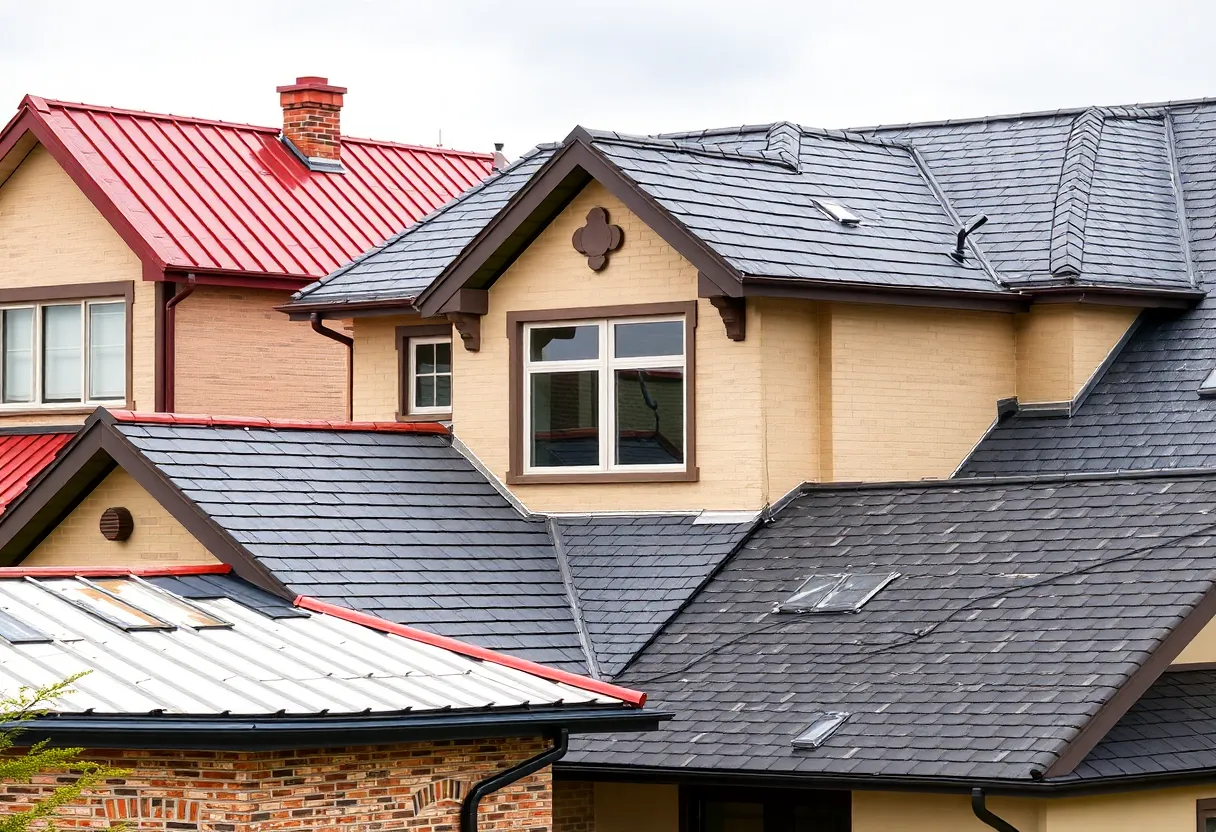

Different roofing types showcasing resilience and aesthetics for homes.
Article Sponsored by:
Mays Contracting is more than just a roofing company; it’s a family legacy built on trust and quality. Founded in 1979, we’ve been serving the community for over four decades. Our story began with a simple vision: to provide exceptional roofing services for both residential and commercial properties. This vision has guided us ever since, as we’ve grown from a small, family-run operation to a trusted name in the industry.
Selecting the appropriate roof type for your home is a significant decision that impacts both aesthetics and functionality. A roof’s design affects not only your home’s curb appeal but also its energy efficiency, durability, and maintenance requirements. This guide outlines vital factors to consider when choosing the best roof type for your home.
Your local climate is one of the primary factors influencing your roofing choice. Different materials perform better in certain conditions, so understanding local weather patterns is essential.
If you live in an area prone to heavy rain, snow, or strong winds, select a roof type that can withstand these elements. Metal roofing, for instance, is favored in regions with snow due to its slip resistance, while slate roofs are excellent for their durability during extreme weather.
In areas with significant temperature fluctuations, consider materials that can expand and contract without damage. Asphalt shingles are popular in varying climates because they can handle temperature changes effectively.
Your home’s architectural style should dictate your roofing choice. Selecting a roof that complements your home’s design enhances its overall appearance.
For traditional homes, asphalt shingles, wood shakes, or slate tiles are common choices. Such materials offer a classic look that enhances the charm of older homes.
In contrast, modern architecture might benefit from flat roofs, metal panels, or green roofs, emphasizing sleek lines and minimalism.
The durability of roofing materials is vital in determining their lifespan and long-term value. Every material has different resilience levels against environmental factors.
Investing in a durable roofing option can lead to lower long-term maintenance costs and reduced frequency of replacements.
The roofing material you choose can impact your home’s energy efficiency. Energy-efficient roofs can help reduce your heating and cooling expenses.
Light-colored or reflective materials such as metal roofs or certain types of shingles can minimize heat absorption, helping keep your home cooler in warm climates.
In colder areas, it’s essential to prioritize proper insulation in your roofing system. Efficient insulation reduces heat loss, leading to lower energy bills.
The weight of roofing materials must match the structural capacity of your home. It’s crucial to consult a structural engineer if you are considering heavy materials like slate or tile roofs.
Metal roofing and asphalt shingles generally have lower maintenance costs compared to wood or tile roofs, which may require regular inspections and treatments to prevent rot or mold.
Understanding the maintenance requirements of each material is crucial to ensure you can manage the upkeep effectively.
Different materials have varying installation costs. Higher-end materials, while durable, may require a more significant upfront investment.
Consider the lifespan and maintenance costs associated with each material. A more affordable option might save you money upfront but could be costlier in the long run.

Quality Roof Construction and Repair in Lexington, Richland, Newberry and Laurens Counties for over 40 Years.
News Summary The Carolina Forest wildfire has impacted over 2,000 acres in South Carolina, with…
News Summary Columbia, SC is bracing for a significant winter storm bringing wintry temperatures and…
News Summary Frasers Property is making a renewed effort to privatize its real estate investment…
News Summary Authorities in Florence County have charged two women in connection with the tragic…
News Summary ARKU Inc., a prominent German company, is opening its first facility in Spartanburg…
News Summary Duke Energy has appointed Tim Pearson as the new state president for South…